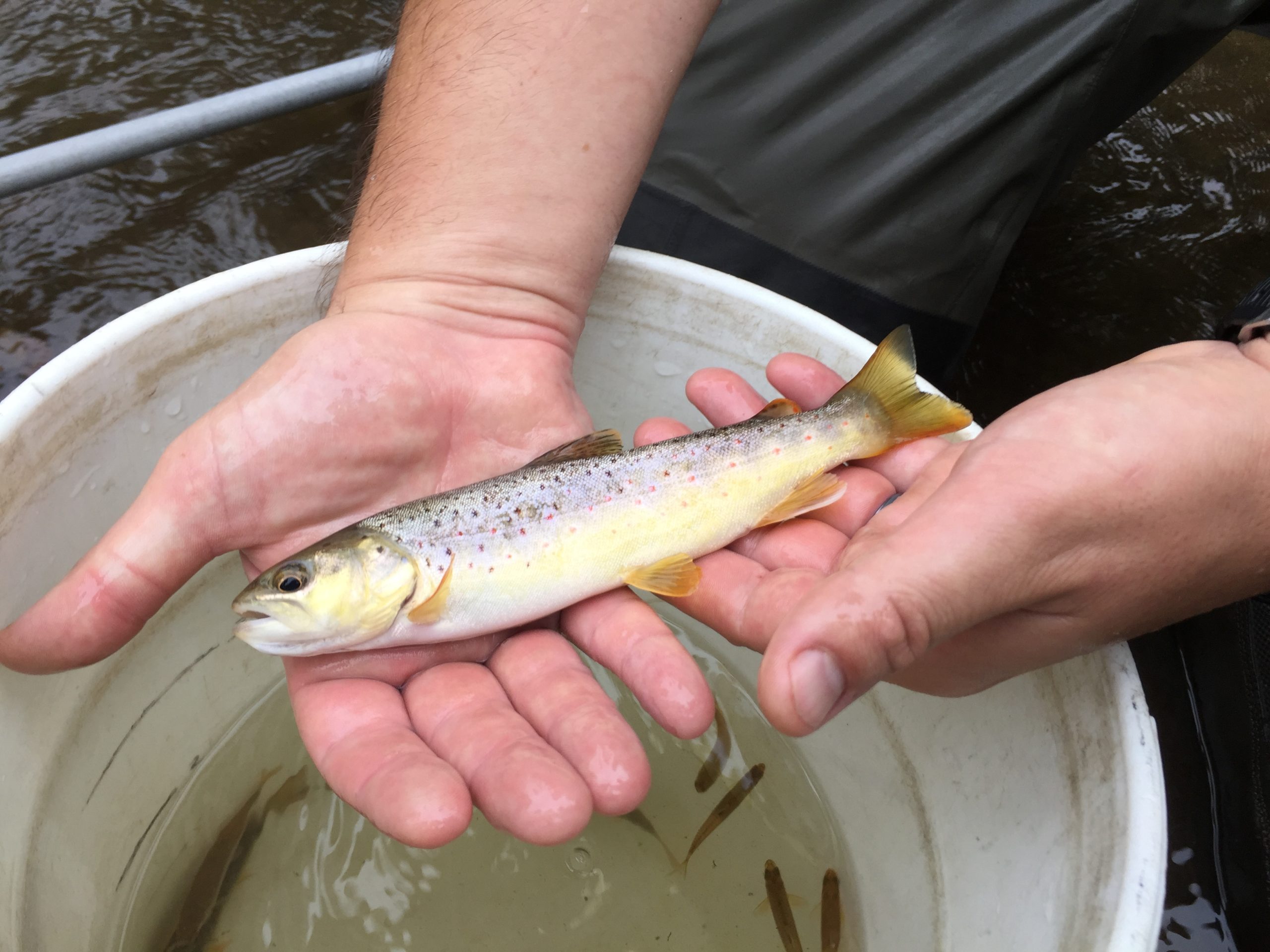A Shocking Discovery in the Jones Falls
Some like it hot. Trout like it cool. To put in scientific terms, they are a “coldwater obligate” species — meaning if the water is too warm (or too dirty), you won’t find any. As we work to make our waters swimmable and fishable, we need to make sure trout populations can thrive. And since trout are so sensitive to pollution and warm water, we can use them as a “barometer” of ecosystem health.
Last year, Blue Water Baltimore implemented the Jones Falls Stream Restoration project, the largest single-site restoration project in our organization’s history. We replaced 560 linear feet of concrete channel with natural features, creating deep pools that lower ambient water temperature. This work will provide significant water quality improvements, with a projected reduction of over 100 pounds of nitrogen pollution annually.
Just a few weeks ago, the Maryland Department of Natural Resources surveyed the fish along a stretch of the newly restored Jones Falls located directly below interstate 83 and Falls Road. With the help of Maryland Trout Unlimited, Darin Crew and Alison Young of Blue Water Baltimore, and Brightwater Inc., biologists armed with electroshocking backpacks surveyed a 100 meter stretch of the Jones Falls to see what fish called this section of stream their home. This electroshocking survey technique temporarily stuns the fish. They float to the top allowing scientists to scoop them up for identification and measurement. After a few minutes of recovery, they are then placed back in the stream.

This is the hottest part of the year both for air and stream temperatures, and yet what did the scientists find? Trout! As well as other fish:
- 4 brown trout, salmo trutta, ranging from 6-8” in good health
- Countless minnows, suckers and shiners:
- Black nose dace- this minnow is the most common fish by weight across the state
- Roundnose dace- this minnow is adapted to living in riffles, fast moving water
- White sucker
- Tessellated darter
- Long nose dace
- Silver tail shiner
Ideally, the temperature of the water should be no more than 68°F for trout. Blue Water Baltimore’s water quality data at a site just upstream of the restoration project indicate that the water temperature was 71°F just a week or so before the survey. While this is higher than ideal, their presence proves that though our waterways are facing significant challenges, there is still a lot worth fighting for and it’s not too late to restore our streams.
Find a link to our previous blog report here.

